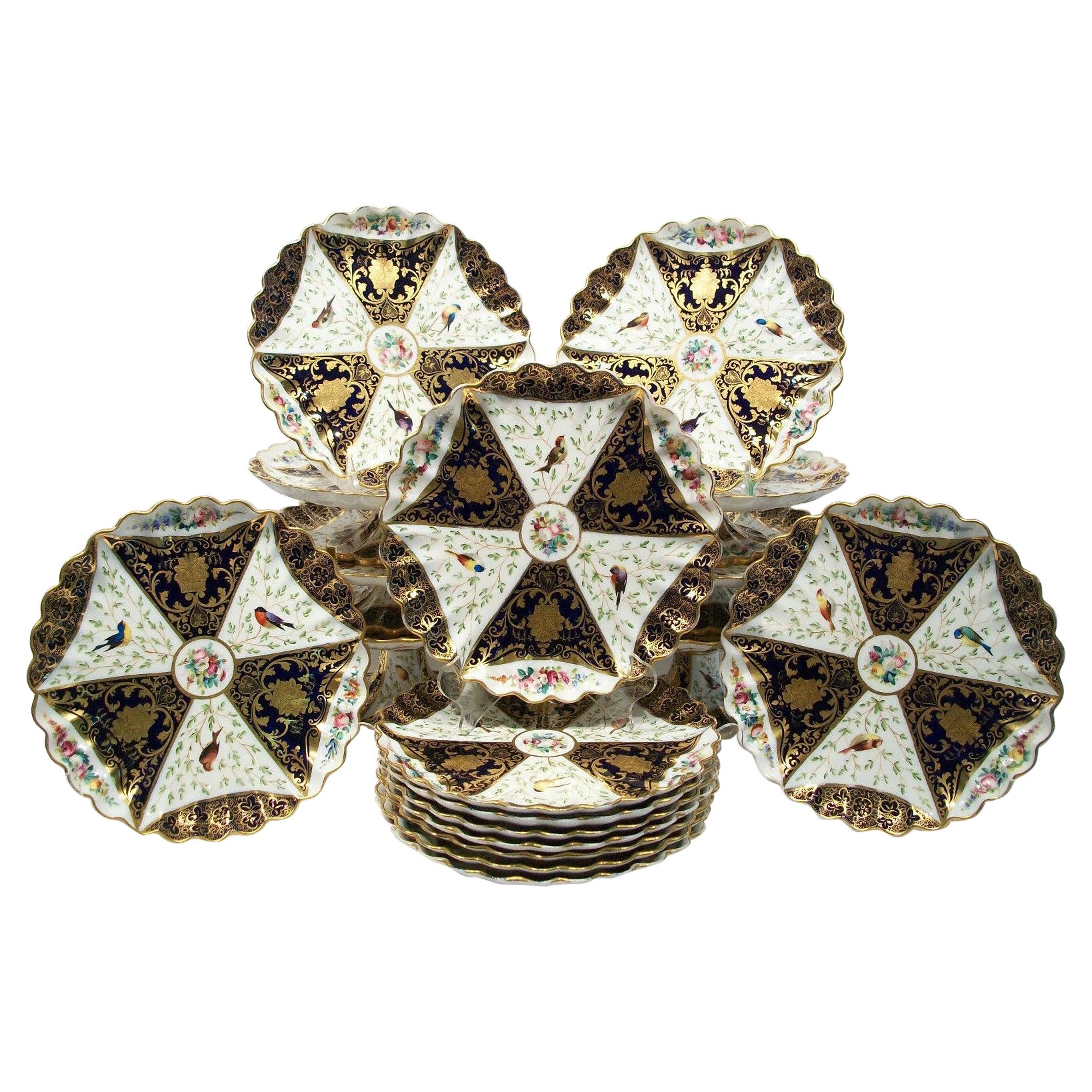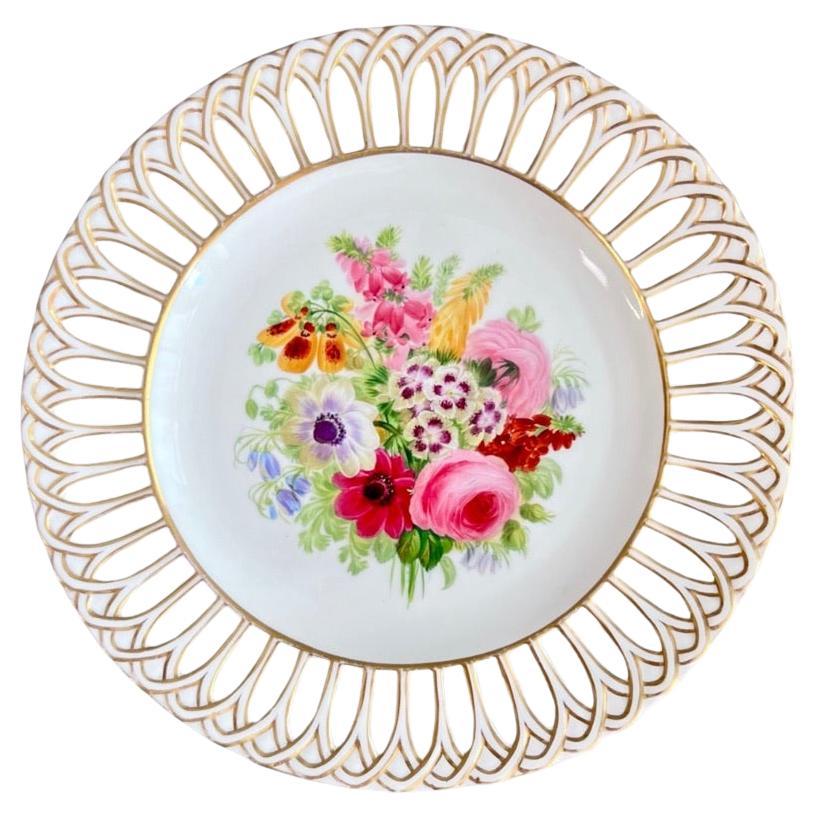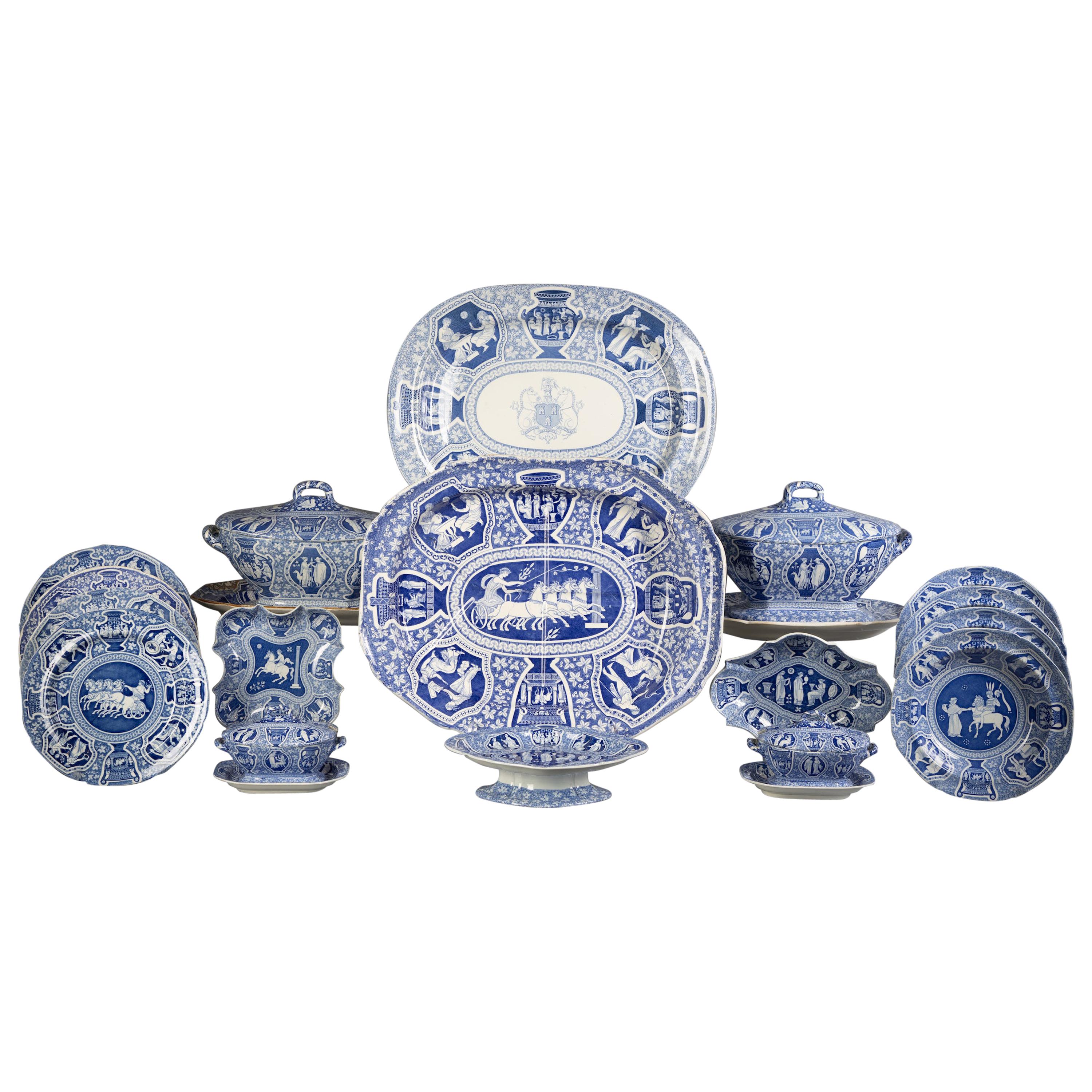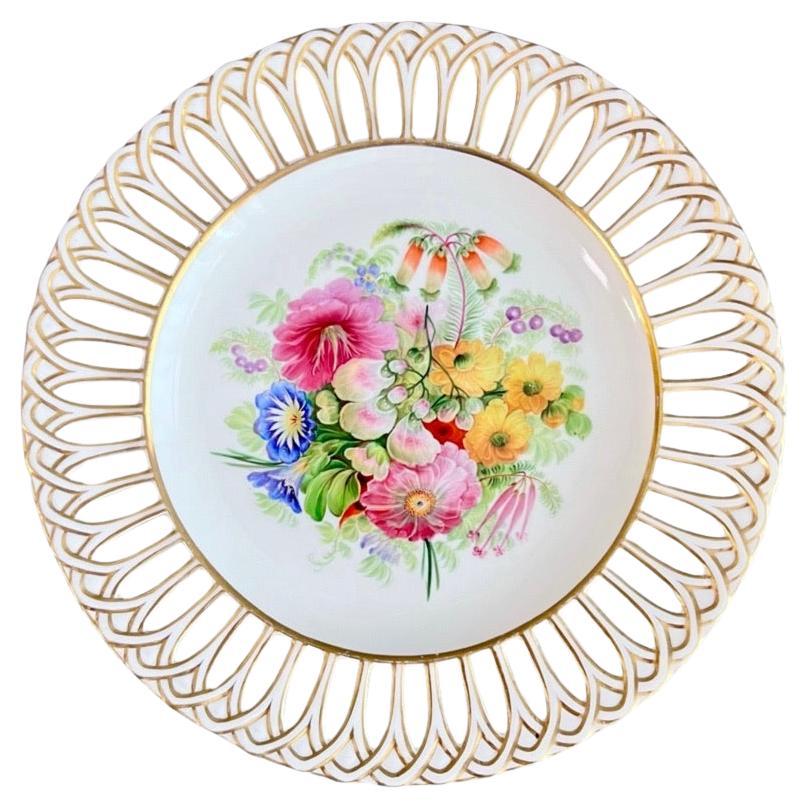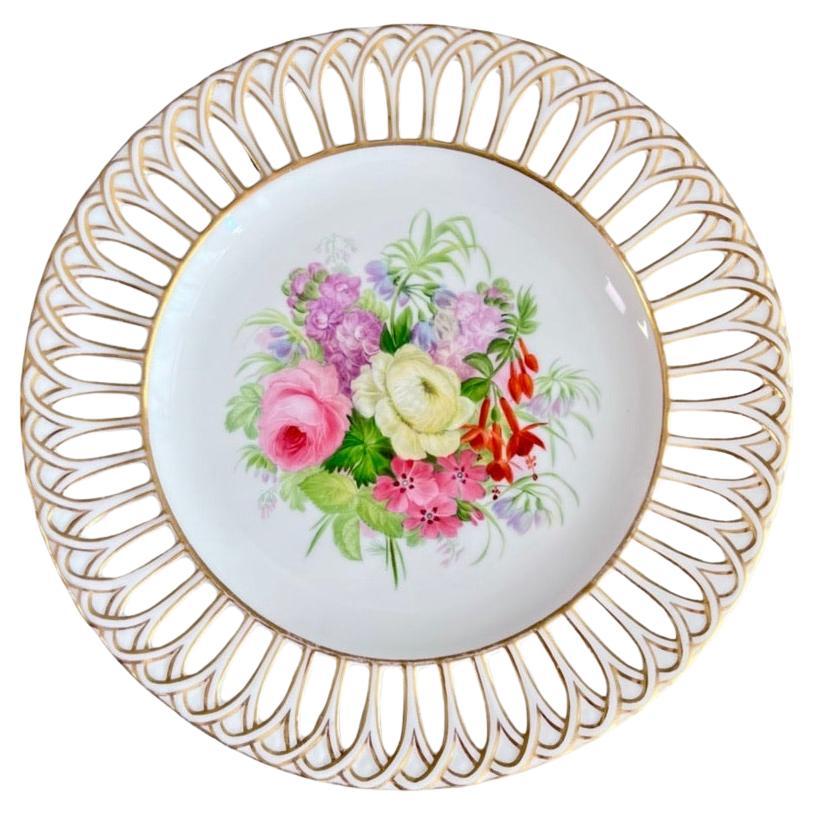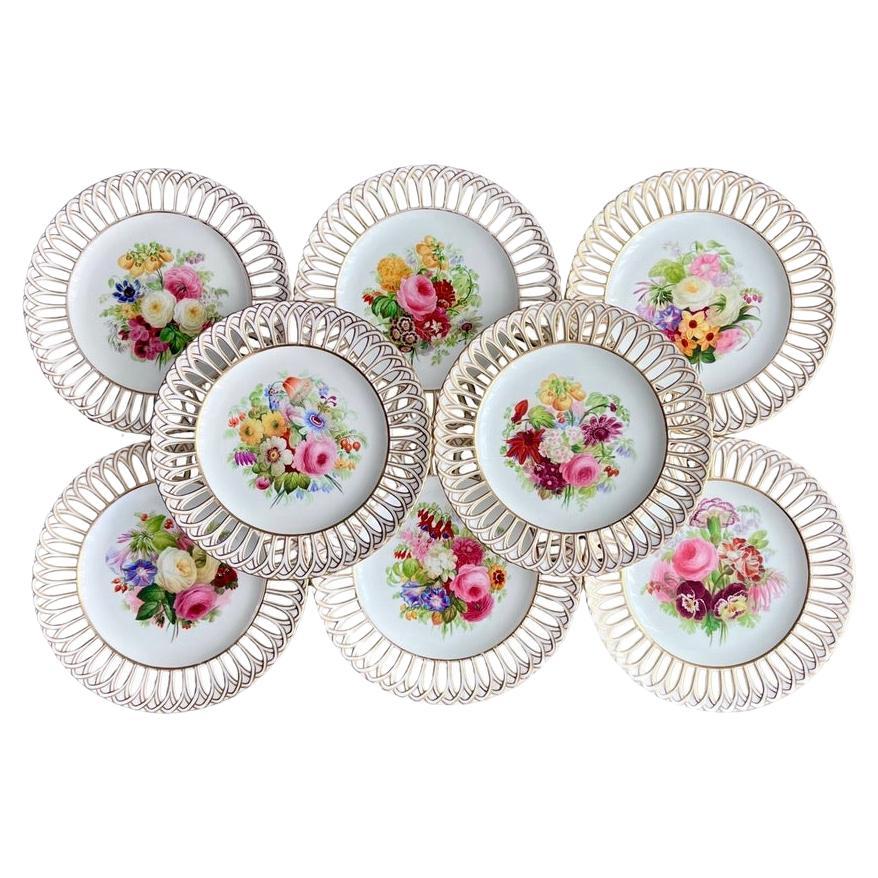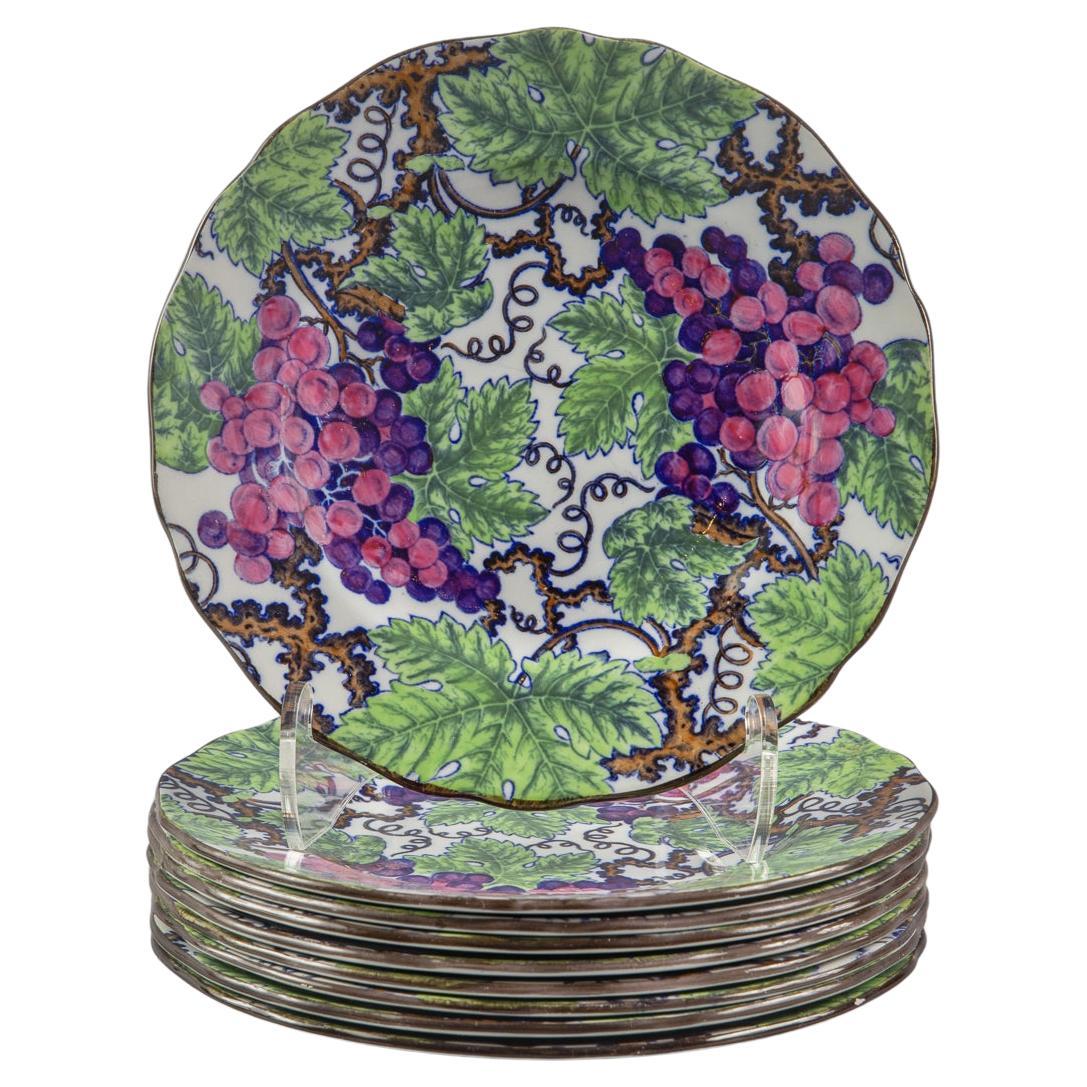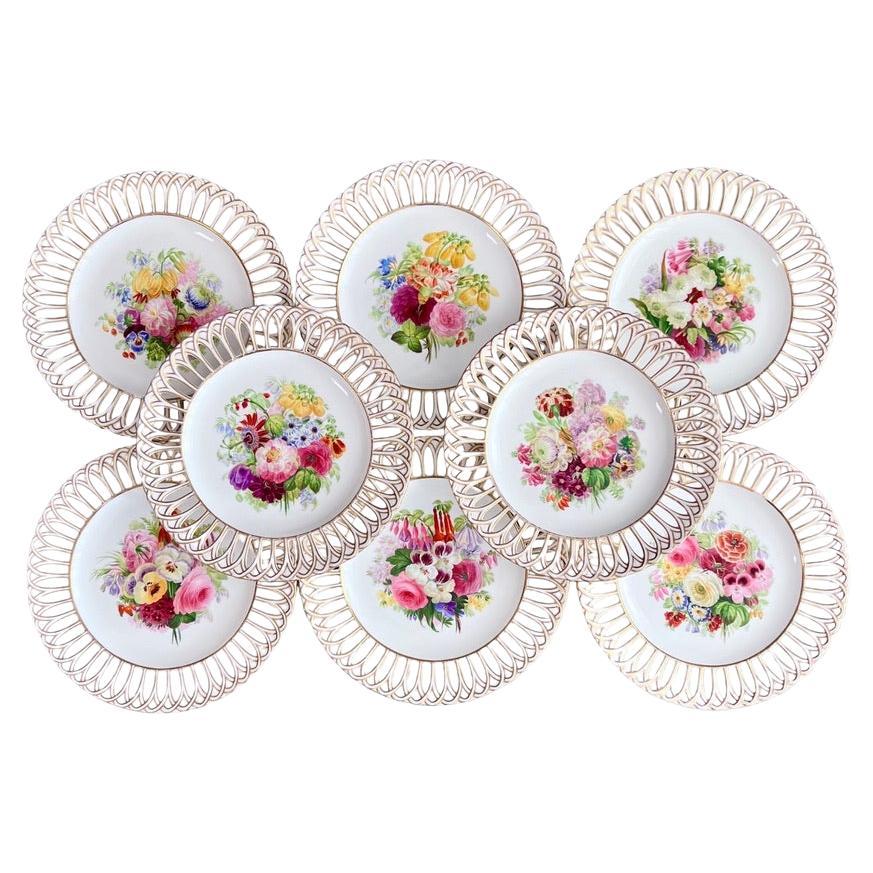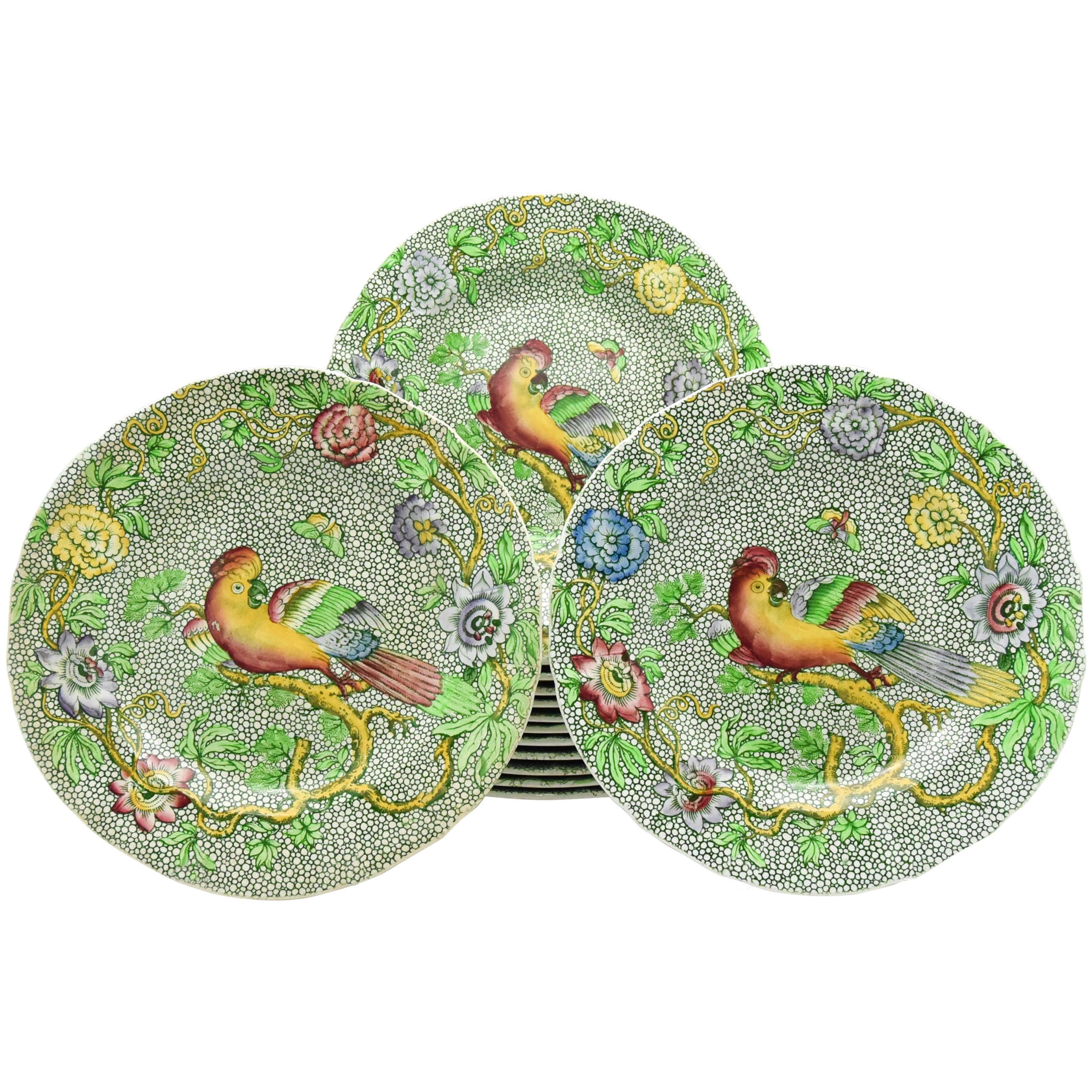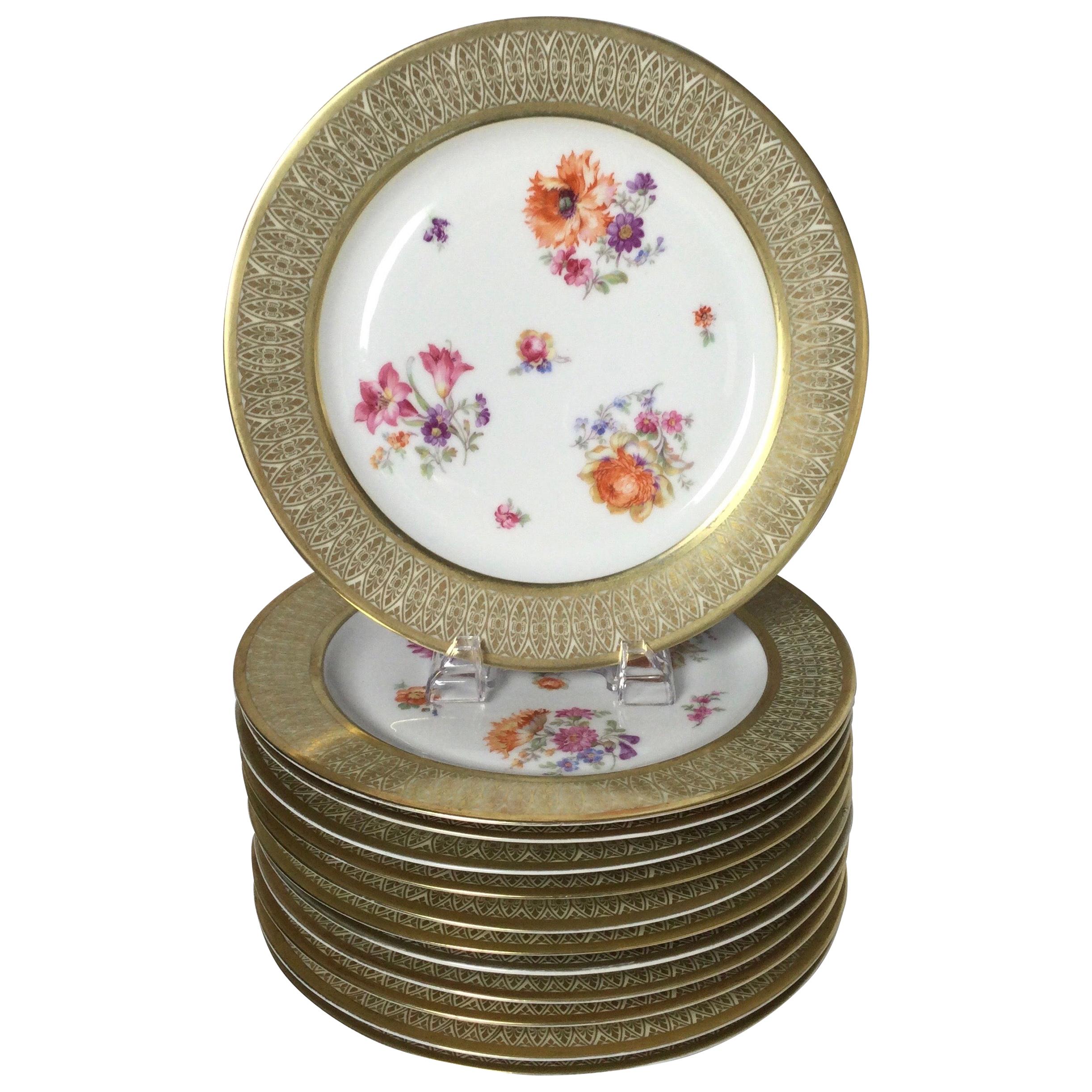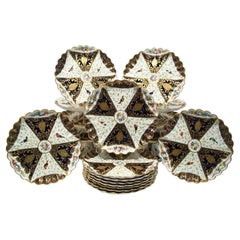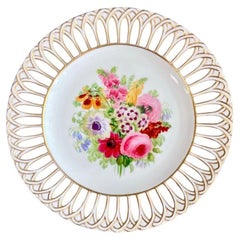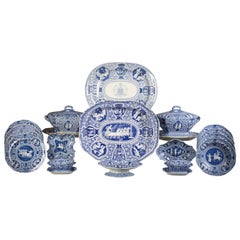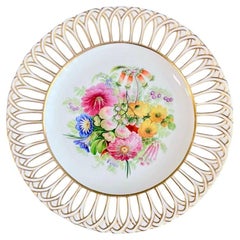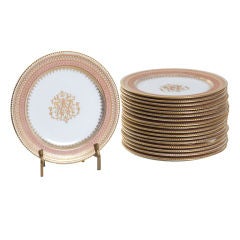
18 Jeweled Copeland Service Plates
View Similar Items
1 of 5
18 Jeweled Copeland Service Plates
About the Item
- Sold As:Set of 18
- Materials and Techniques:
- Place of Origin:
- Period:
- Date of Manufacture:19th Century
- Condition:Very nice with some wear.
- Seller Location:San Francisco, CA
- Reference Number:1stDibs: U12012079045053
Authenticity Guarantee
In the unlikely event there’s an issue with an item’s authenticity, contact us within 1 year for a full refund. DetailsMoney-Back Guarantee
If your item is not as described, is damaged in transit, or does not arrive, contact us within 7 days for a full refund. Details24-Hour Cancellation
You have a 24-hour grace period in which to reconsider your purchase, with no questions asked.Vetted Professional Sellers
Our world-class sellers must adhere to strict standards for service and quality, maintaining the integrity of our listings.Price-Match Guarantee
If you find that a seller listed the same item for a lower price elsewhere, we’ll match it.Trusted Global Delivery
Our best-in-class carrier network provides specialized shipping options worldwide, including custom delivery.You May Also Like
COPELAND, Antique Gilt Porcelain Ornithological Dessert Service, Circa 1851-95
By Copeland
Located in Chatham, ON
COPELAND - Rare - museum quality - antique porcelain ornithological luncheon or dessert service - each plate and comport hand painted with three different specimens of birds against leafy branches - floral sprays to the center and border of each piece - alternating sections of cobalt blue with the finest quality gilding - each piece with fluted & scalloped edges - incredible attention to detail with the underside of the tall comports completely decorated - total of 18 pieces (12 plates - 2 tall comports - 4 short comports) - impressed letters & numbers - hand painted model number on each piece - 1/2642 - each piece with under glaze blue factory stamp - United Kingdon - circa 1851-95.
Excellent antique condition - restored tall comport - a few minor edge chips - minor gilding loss - otherwise in fine antique form...
Category
Antique Late 19th Century British Aesthetic Movement Dinner Plates
Materials
Porcelain
Copeland Plate, Reticulated, Sublime Flowers by Greatbatch, 1848 (3)
By Copeland
Located in London, GB
This is a beautiful plate made by Copeland in 1848. It is decorated with a sublimely painted flower arrangement by the artist Greatbatch.
We have two sets of 8 of these plates available, as well as a few more separate ones; please see separate listings.
The Copeland factory was the third iteration of the famous Spode factory, after the "Copeland & Garrett" period which transitioned into the "Copeland" period in about 1833. The Spode/Copeland factory was one of the most prominent potteries right from the start of English porcelain production in the late 1700s to the demise of the industry in the 1960s and ultimate closure in the early 21st Century. In fact it was the founder Josiah Spode who was responsible for the recipe for bone china that made English china production so successful in the two centuries to come. Throughout all the changes, their items have always remained of exceptionally high quality and many of the designs have become iconic.
This plate was potted in fine white bone china, the rim meticulously reticulated in the "Gothic" shape. Reticulation was very time consuming and difficult, and just this detail would have made this plate expensive. The sublimely painted flower arrangement painted in the centre were done by Greatbatch, one of the well-known floral artists working for Copeland. Greatbatch was active between 1845 and 1860, and worked together with his brother R. Greatbatch, who was a talented gilder. They exhibited at the Great Exhibition of 1851.
This plate would have belonged to a sublimely expensive dessert service. It is stamped with the small blue Copeland mark with interlocking C's, and painted in red with the pattern number 7913, dating it at the year 1848.
Documentation: A plate of this service is shown on page 80 of Steven Smith's "Spode & Copeland: Over Two Hundred Years of Fine China and...
Category
Antique 1840s English Victorian Dinner Plates
Materials
Porcelain
Assembled Copeland and Garrett Part Dinner Service, Early 19th Century
Located in New York, NY
UPDATE: SOLD 12 dinner plates, 10 soup plates, one well-and-tree platter. Each piece transfer-printed in blue with panels of classical figures and vases, comprising: a soup tureen and cover, a {21" well-and-tree meat platter}, a 21" platter printed with a coat of arms, a 14.75" platter, a 14.5" platter and strainer, two 12.5" platter, three 11.75" platters, two sauce tureens, covers and stands, an open vegetable dish, a lozenge-shaped dish, two shaped square dishes, a lozenge-shaped tazza, {twelve dinner plates, ten soup plates}, five dessert plates and five side plates, some pieces with either printed and impressed Copeland and Garrett...
Category
Antique Early 19th Century English Porcelain
Materials
Porcelain
Copeland dessert Plate, Reticulated, Sublime Flowers by Greatbatch, 1848 (1)
By Copeland
Located in London, GB
This is a beautiful plate made by Copeland in 1848. It is decorated with a sublimely painted flower arrangement by the artist Greatbatch.
We have two sets of 8 of these plates available, as well as a few more separate ones; please see separate listings.
The Copeland factory was the third iteration of the famous Spode factory, after the "Copeland & Garrett" period which transitioned into the "Copeland" period in about 1833. The Spode/Copeland factory was one of the most prominent potteries right from the start of English porcelain production in the late 1700s to the demise of the industry in the 1960s and ultimate closure in the early 21st Century. In fact it was the founder Josiah Spode who was responsible for the recipe for bone china that made English china production so successful in the two centuries to come. Throughout all the changes, their items have always remained of exceptionally high quality and many of the designs have become iconic.
This plate was potted in fine white bone china, the rim meticulously reticulated in the "Gothic" shape. Reticulation was very time consuming and difficult, and just this detail would have made this plate expensive. The sublimely painted flower arrangement painted in the centre were done by Greatbatch, one of the well-known floral artists working for Copeland. Greatbatch was active between 1845 and 1860, and worked together with his brother R. Greatbatch, who was a talented gilder. They exhibited at the Great Exhibition of 1851.
This plate would have belonged to a sublimely expensive dessert service. It is stamped with the small blue Copeland mark with interlocking C's, and painted in red with the pattern number 7913, dating it at the year 1848.
Documentation: A plate of this service is shown on page 80 of Steven Smith's "Spode & Copeland: Over Two Hundred Years of Fine China and...
Category
Antique 1840s English Victorian Dinner Plates
Materials
Porcelain
Copeland Plate, Reticulated with Sublime Flowers by Greatbatch, 1848 (2)
By Copeland
Located in London, GB
This is a beautiful plate made by Copeland in 1848. It is decorated with a sublimely painted flower arrangement by the artist Greatbatch.
We have two sets of 8 of these plates available, as well as a few more separate ones; please see separate listings.
The Copeland factory was the third iteration of the famous Spode factory, after the "Copeland & Garrett" period which transitioned into the "Copeland" period in about 1833. The Spode/Copeland factory was one of the most prominent potteries right from the start of English porcelain production in the late 1700s to the demise of the industry in the 1960s and ultimate closure in the early 21st Century. In fact it was the founder Josiah Spode who was responsible for the recipe for bone china that made English china production so successful in the two centuries to come. Throughout all the changes, their items have always remained of exceptionally high quality and many of the designs have become iconic.
This plate was potted in fine white bone china, the rim meticulously reticulated in the "Gothic" shape. Reticulation was very time consuming and difficult, and just this detail would have made this plate expensive. The sublimely painted flower arrangement painted in the centre were done by Greatbatch, one of the well-known floral artists working for Copeland. Greatbatch was active between 1845 and 1860, and worked together with his brother R. Greatbatch, who was a talented gilder. They exhibited at the Great Exhibition of 1851.
This plate would have belonged to a sublimely expensive dessert service. It is stamped with the small blue Copeland mark with interlocking C's, and painted in red with the pattern number 7913, dating it at the year 1848.
Documentation: A plate of this service is shown on page 80 of Steven Smith's "Spode & Copeland: Over Two Hundred Years of Fine China and...
Category
Antique 1840s English Victorian Dinner Plates
Materials
Porcelain
Copeland Set of 8 plates, Reticulated, Sublime Flowers by Greatbatch, 1848
By Copeland
Located in London, GB
This is a stunning set of 8 reticulated plates made by Copeland in 1848. Each plate is decorated with a unique sublimely painted flower arrangement by the artist Greatbatch.
We have a second set of 8 of these plates available, as well as a few separate ones; please see separate listings.
The Copeland factory was the third iteration of the famous Spode factory, after the "Copeland & Garrett" period which transitioned into the "Copeland" period in about 1833. The Spode/Copeland factory was one of the most prominent potteries right from the start of English porcelain production in the late 1700s to the demise of the industry in the 1960s and ultimate closure in the early 21st Century. In fact it was the founder Josiah Spode who was responsible for the recipe for bone china that made English china production so successful in the two centuries to come. Throughout all the changes, their items have always remained of exceptionally high quality and many of the designs have become iconic.
These plates were potted in fine white bone china, the rims meticulously reticulated in the "Gothic" shape. Reticulation was very time consuming and difficult, and just this detail would have made these plates expensive. The sublimely painted flower arrangements in the centre were done by Greatbatch, one of the well-known floral artists working for Copeland. Greatbatch was active between 1845 and 1860, and worked together with his brother R. Greatbatch, who was a talented gilder. They exhibited at the Great Exhibition of 1851.
These plates would have belonged to a sublimely expensive dessert service. They are all stamped with the small blue Copeland mark with interlocking C's, and painted in red with the pattern number 7913, dating it at the year 1848.
Documentation: A plate of this service is shown on page 80 of Steven Smith's "Spode & Copeland: Over Two Hundred Years of Fine China and Porcelain...
Category
Antique 1840s English Victorian Dinner Plates
Materials
Porcelain
